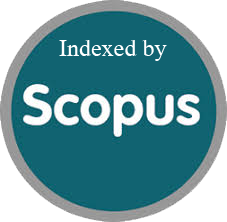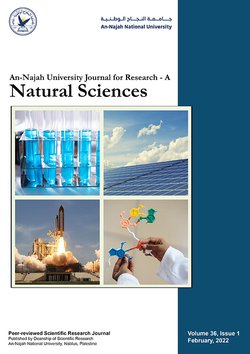Effect of Pruning on Some Physiological and Anatomical Features in Olive Transplants (Olea europaea L.)
Authors:
Article info
2007-07-14
2008-04-08
2008-04-08
93 - 108
Keywords
Abstract
The effect of pruning (cut-back at 5cm height) in comparison to no pruning (plants with central leader) was studied at eco-physiological and anatomical levels in olive trees. Photosynthetic rate, stomatal conductance, leaf water potential, leaf osmotic potential, turgor potential, relative water content, and different anatomical features were reported. The results indicate that, non-pruned plants presented higher value of photosynthetic rate and stomatal conductance compared to the pruned plants. In addition, they maintain higher turgor potential for the same values of relative water content (RWC). At anatomical level, non-pruned plants exhibited higher relative volume of spongy cells, spongy thickness and significantly higher number of vascular bundles per leaf section compared to the pruned plants. Palisade parenchyma thicknesses as well as non-glandular hair density (No./mm2) were lower in pruned plants. Possible effect of pruning on juvenility is discussed.
Salimia, “Rezq Basheer.” (2008). Effect of Pruning on Some Physiological and Anatomical Features in Olive Transplants (Olea europaea L.). An-Najah University Journal for Research - A (Natural Sciences), 22(1), 93–108. https://doi.org/10.35552/anujr.a.22.1.537
[1]“Rezq Basheer” Salimia, “Effect of Pruning on Some Physiological and Anatomical Features in Olive Transplants (Olea europaea L.),” An-Najah University Journal for Research - A (Natural Sciences), vol. 22, no. 1, pp. 93–108, Apr. 2008, doi: 10.35552/anujr.a.22.1.537.
Salimia, “Rezq Basheer.” “Effect of Pruning on Some Physiological and Anatomical Features in Olive Transplants (Olea Europaea L.).” An-Najah University Journal for Research - A (Natural Sciences), vol. 22, no. 1, Apr. 2008, pp. 93–108. Crossref, https://doi.org/10.35552/anujr.a.22.1.537.
1.Salimia “Rezq Basheer.” Effect of Pruning on Some Physiological and Anatomical Features in Olive Transplants (Olea europaea L.). An-Najah University Journal for Research - A (Natural Sciences) [Internet]. 2008 Apr;22(1):93–108. Available from: http://dx.doi.org/10.35552/anujr.a.22.1.537
Salimia, “Rezq Basheer.” “Effect of Pruning on Some Physiological and Anatomical Features in Olive Transplants (Olea Europaea L.).” An-Najah University Journal for Research - A (Natural Sciences) 22, no. 1 (April 2008): 93–108. https://doi.org/10.35552/anujr.a.22.1.537.
أثر التقليم على بعض الخواص الفسيولوجية والتشريحية لأشتال الزيتون
المؤلفون:
معلومات المقال
2007-07-14
2008-04-08
2008-04-08
93 - 108
الكلمات الإفتتاحية
الملخص
في هذه الدراسة تم مقارنة فسيولوجية وتشريحية على اشتال الزيتون المقلمة على ارتفاع 5سم من سطح التربة مع النباتات غير المقلمة (نباتات مرباة باستخدام القائد الوسطي) على المستوييـن الفسيولوجي والتشريحي، حيث تم قياس المعايير التالية: معدل التمثيل الضوئي، كفاءة التوصيـل لـدى خلايـا الثغـور، الضغـط المائـي، الضغـط الأسمـوزي، الجهـد المائـي (Turgor Potential)، المحتوى المائي النسبي، وكذلك بعض الخصائص التشريحية لأوراق الزيتون. أظهرت النتائج أن الأشجار غير المقلمة (المرباة بطريقة القائد الوسطي) كانت ذات معدلات أعلى من حيث التمثيل الضوئي وكفاءة التوصيل لدى خلايا الثغور مقارنة مع الأشجار التي تم تقليمها. كما حافظت خلايا الأشجار غير المقلمة على جهد مائي عال للقيم نفسها من المحتوى المائي النسبي. أما على المستوى التشريحي، فقد كانت أوراق الأشجار غير المقلمة أكثر سماكةً، وتميزت طبقة خلاياها الإسفنجية بكثافتها وسمكها. كما ولوحظ أيضاً زيادة في أعداد الحزم الوعائية، وزيادة سماكة الطبقة البرانشيمية، مع زيادة كثافة الشعيرات لكل مقطع من الورقة مقارنةً مع الأشجار التي تم تقليمها.
Salimia, “Rezq Basheer.” (2008). Effect of Pruning on Some Physiological and Anatomical Features in Olive Transplants (Olea europaea L.). An-Najah University Journal for Research - A (Natural Sciences), 22(1), 93–108. https://doi.org/10.35552/anujr.a.22.1.537
[1]“Rezq Basheer” Salimia, “Effect of Pruning on Some Physiological and Anatomical Features in Olive Transplants (Olea europaea L.),” An-Najah University Journal for Research - A (Natural Sciences), vol. 22, no. 1, pp. 93–108, Apr. 2008, doi: 10.35552/anujr.a.22.1.537.
Salimia, “Rezq Basheer.” “Effect of Pruning on Some Physiological and Anatomical Features in Olive Transplants (Olea Europaea L.).” An-Najah University Journal for Research - A (Natural Sciences), vol. 22, no. 1, Apr. 2008, pp. 93–108. Crossref, https://doi.org/10.35552/anujr.a.22.1.537.
1.Salimia “Rezq Basheer.” Effect of Pruning on Some Physiological and Anatomical Features in Olive Transplants (Olea europaea L.). An-Najah University Journal for Research - A (Natural Sciences) [Internet]. 2008 Apr;22(1):93–108. Available from: http://dx.doi.org/10.35552/anujr.a.22.1.537
Salimia, “Rezq Basheer.” “Effect of Pruning on Some Physiological and Anatomical Features in Olive Transplants (Olea Europaea L.).” An-Najah University Journal for Research - A (Natural Sciences) 22, no. 1 (April 2008): 93–108. https://doi.org/10.35552/anujr.a.22.1.537.

Since 2019
Cite Score (Scopus): 0.5
Time to First Decision: 3 Days
Submission to Acceptance: 64 Days
Acceptance to Publication: 10 Days
Acceptance Rate: 28%
Call for Papers:
Sustainable Materials and Chemistry for Energy and Environmental Applications
Why should you
Publish With Us?
An-Najah National University
Nablus, Palestine
Nablus, Palestine
- P.O. Box
- 7, 707
- Fax
- (970)(9)2345982
- Tel.
- (970)(9)2345560
- (970)(9)2345113/5/6/7-Ext. 2628
- [email protected]
- EIC
- Prof. Waleed Sweileh
An-Najah University Journal for Research - A (Natural Sciences) by An-Najah University, Nablus, Palestine is licensed under CC BY-NC 4.0

